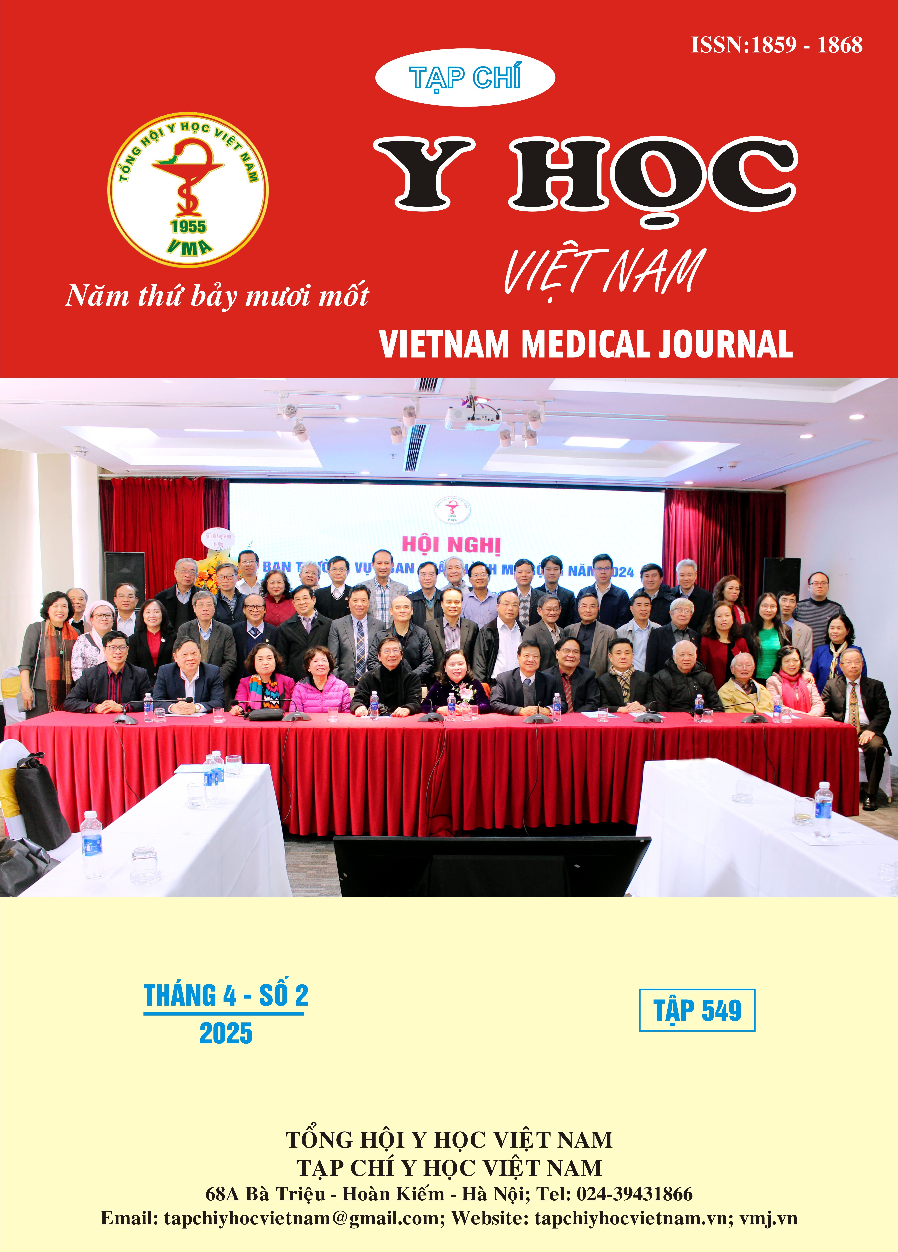EPIDEMIOLOGICAL, CLINICAL AND PARACLINICAL CHARACTERISTICS OF HUMAN ADENOVIRUS PNEUMONIA AT HAI PHONG CHILDREN'S HOSPITAL IN THE PERIOD OF 2022-2024
Main Article Content
Abstract
Objective: To describe the epidemiological, clinical, and paraclinical characteristics of Human Adenovirus (HAdV)-infected pneumonia at Hai Phong Children's Hospital from October 1, 2022, to September 30, 2024. Subjects and Methods: This study is a case series utilizing a convenience sampling method, with a total sample size consisting of all pediatric patients diagnosed with HAdV-infected pneumonia during the study period. Results: A total of 86 cases were studied. The male-to-female ratio was approximately 2.2:1. The majority of patients presented with high fever (≥39°C) (93.4%) and prolonged fever lasting ≥5 days (95.3%). The most common respiratory symptoms included cough, runny nose, tachypnea, and lung crackles. Extrapulmonary symptoms observed in a significant proportion of patients included erythematous, swollen tonsils, conjunctivitis, skin erythema, vomiting, and diarrhea. Most pediatric patients exhibited an elevated white blood cell count, neutrophil count, and serum C-reactive protein (CRP) levels. Anemia was present in 36.1% of cases, primarily of mild severity. Chest X-ray findings revealed diverse lung lesions, with interstitial lung changes being the most prevalent (65.1%). Conclusion: HAdV pneumonia is a severe lower respiratory tract infection characterized by prolonged high fever and varied lung damage, with interstitial lung involvement being the most common. It is crucial to identify common extrapulmonary symptoms such as erythematous, swollen tonsils, conjunctivitis, skin erythema, vomiting, and diarrhea to facilitate the early diagnosis of pediatric patients with HAdV-infected pneumonia.
Article Details
Keywords
pneumonia, adenovirus, children, interstitial lung damage
References
2. Nguyễn Thị Mai Thùy, Tạ Anh Tuấn, and Đậu Việt Hùng, Một số yếu tố nguy cơ liên quan đến tử vong ở bệnh nhi viêm phổi nặng do Adenovirus tại Khoa Điều trị tích cực Bệnh viện Nhi Trung ương. Tạp chí Y học Việt Nam, 2021. 498(1): p. 193-196.
3. Lee, N.J. and S. Woo, Increased Trend of Adenovirus Activity After the COVID-19 Pandemic in South Korea: Analysis of National Surveillance Data. 2024. 44(6): p. 581-585.
4. Geneva: World Health Organization, Pocket Book of Hospital Care for Children: Guidelines for the Management of Common Childhood Illnesses. 2nd edition. 2013.
5. Bộ Y tế, Hướng dẫn chẩn đoán, điều trị, phòng và kiểm soát lây nhiễm bệnh do virus Adeno ở trẻ em. 2022, Quyết định 3451/QĐ-BYT, ban hành ngày 26/12/2022. 2022.
6. Trần Thanh Thức, Trần Anh Tuấn, and Phùng Nguyễn Thế Nguyên, Đặc điểm dịch tễ, lâm sàng, cận lâm sàng viêm phổi nặng có kết quả PCR đàm dương tính với Adenovirus ở trẻ từ 2 tháng đến 5 tuổi tại Bệnh viện Nhi đồng 1. Tạp chí Y học Việt Nam, 2021. 502(2): p. 167-171.
7. Lê Thị Hồng Hanh, et al., Đặc điểm lâm sàng và yếu tố tiên lượng nặng viêm phổi nhiễm Adenovirus ở trẻ em tại trung tâm hô hấp, Bệnh viện Nhi Trung ương. Tạp chí Nhi khoa, 2023. 16(3): p. 8-13.
8. Đặng Thị Thúy, et al., Đặc điểm lâm sàng, cận lâm sàng của bệnh nhi nhiễm Adenovirus điều trị tại Bệnh viện Bệnh nhiệt đới Trung ương, giai đoạn 2022 - 2023. Tạp chí Truyền nhiễm Việt Nam, 2024. 3(47): p. 2-8.
9. Wang, C., et al., Clinical features and epidemiological analysis of respiratory human adenovirus infection in hospitalized children: a cross-sectional study in Zhejiang. Virology Journal, 2021. 18(1): p. 234.
10. Probst, V., et al., Adenovirus Infection in Hospitalized Children with Acute Respiratory Infection in Jordan. Pediatr Infect Dis J, 2022. 41(4): p. 277-283.


